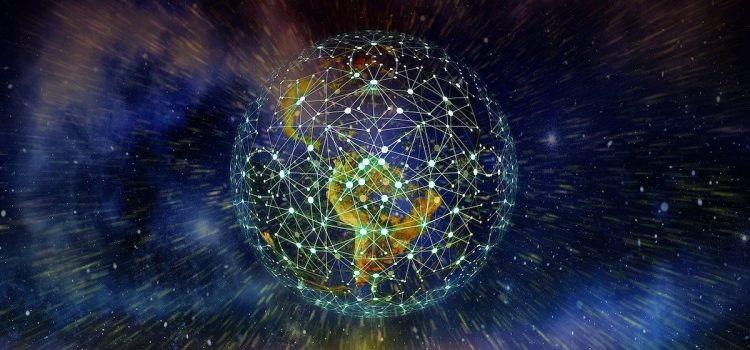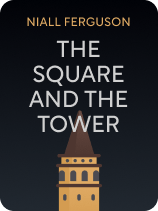

This article is an excerpt from the Shortform book guide to "The Square and the Tower" by Niall Ferguson. Shortform has the world's best summaries and analyses of books you should be reading.
Like this article? Sign up for a free trial here.
Where’s the growing connectedness of the world headed? Is a global Utopia in our future?
Certain visionaries, social media proponents, and Silicon Valley entrepreneurs argue that making the world more connected through social media and global commerce will contribute to building a utopian future of world peace and equality. Niall Ferguson contends that this isn’t the case.
Keep reading to understand Ferguson’s argument as he applies network theory to the future of our networked age.
The Future of the Networked Age
Ferguson stops short of making specific predictions about what the future holds, but he identifies a number of trends in our networked age that contradict the idea that the growth of current networks will precipitate world peace and equality.
Network Growth Doesn’t Bring Peace
First of all, the growth of networks independent of a hierarchical power structure tends to weaken that power structure. Thus, Ferguson says, if the growth of new networks sufficiently undermines the hierarchies that are responsible for maintaining order, the result is anarchy, not peace.
In the case of social media, this scenario is not entirely hypothetical. As Ferguson points out, the proliferation of “fake news” and other inflammatory information passed around social media networks has increased the polarization of opinions and created some unrest in the United States.
(Shortform note: In The Four, a book about the four biggest tech companies in the US, Scott Galloway discusses how social media’s business model makes it inherently prone to promoting polarization. Social media companies like Facebook make most of their revenue by selling targeted advertising. They tend to run ads that target the audience with the most radical views because it’s easier for their algorithms to identify the interests of users who have strong opinions or radical views. Ads that target radical views tend to be more polarizing and are more likely to stoop to the level of fake news.)
Furthermore, says Ferguson, Islamic insurgent groups such as ISIS have made effective use of social media and messaging apps to grow their networks and coordinate their activities. This growth of insurgent networks in the Middle East led to extensive violence and the overthrow, or partial overthrow, of government hierarchies in Iraq and Syria.
| How Networks Facilitate Terrorism As Yuval Noah Harari explains in 21 Lessons for the 21st Century, media networks play a key role in helping terrorists destabilize national governments, not just in allowing them to recruit operatives and coordinate attacks. The strategic principle of terrorism is that a relatively small attack can create enough public fear to undermine people’s faith in the government’s ability to maintain peace, ultimately compromising the government’s legitimacy. A successful terrorist attack might only kill a dozen people, but it makes millions of people feel unsafe. This is only possible if news of the attack spreads widely and sensationalizes it out of proportion. Thus, terrorists owe a large part of their success to the fact that both social media networks and traditional mass media networks are effective at spreading and sensationalizing news of terrorist attacks. |
The Global Hierarchy of the Future Is Uncertain
Another reason Ferguson doesn’t expect the growth of extra-governmental networks to lead to peace is that they threaten the existing established hierarchy. Ferguson believes that it takes a universally accepted hierarchy to maintain order and stability in society. He’s concerned that the world hierarchy established after World War II has decayed, much as the old pentarchy did before World War I, and that there isn’t a unified global vision for what the world hierarchy looks like, or should look like, in the future.
One reason for this breakdown is the rise of online commerce and communications networks such as Facebook, Google, and Amazon, which have emerged as powerful entities. It’s unclear exactly how these platforms will fit (or should fit) into the hierarchy of the global power structure. The only certainty is that they will, in some way, be solidly a part of it: The elections of 2016—both in the US and in the UK—showed decisively how social media can influence democratic governments by influencing voters.
| Troll Farms Add to the Uncertainty To complicate matters even beyond what Ferguson discusses, in recent years, troll farms have added a new dimension to the relationship between social media networks, citizens, and government hierarchies. In internet parlance, “trolling” consists of creating spurious profiles on social media and using them to spread rumors, disseminate misinformation, or heckle others who post on social media. Troll farms are organizations that use coordinated trolling to influence the public narrative, often for the purpose of manipulating an election. Some governments now have their own troll farms integrated right into the formal hierarchy. Other governments hire private agencies to provide trolling services. They may use troll farms to control the narrative in their own country or to manipulate elections in other countries, ultimately to advance their own agenda on the international stage. All three networks that Ferguson mentions—Facebook, Google, and Amazon—have proven to be fertile soil for troll farms. Some of Facebook’s highest-traffic pages related to the US 2016 and 2020 elections were run by troll farms in Eastern Europe. In the realm of e-commerce, merchants can hire troll farms to flood their product pages with positive reviews, causing Amazon’s algorithms to rank their products higher and show them to more customers. Similarly, trolls can be enlisted to artificially boost traffic and other metrics so that a web page will rank higher in search engines like Google. In some sense, state-sponsored troll farms provide a convenient mechanism for government hierarchies to informally integrate social media networks into the formal hierarchy, using social media to control the public narrative without officially regulating media platforms. Yet they also have the potential to undermine the legitimacy of the governments that use them. In any case, they add one more variable to the power equation, making future hierarchies more difficult to predict. |
Ferguson examines two contrasting approaches some governments are taking to regulating social media platforms as they try to incorporate them into their existing power structures. One approach hails from Europe and the other from China.
The European Vision
While the US government has left social media networks largely to their own devices, European governments have increasingly tried to regulate them. European regulators demand that social media companies promptly remove and report any posts that call for violence or otherwise violate the law. However, they have allowed social media companies to remain otherwise independent.
Ferguson notes that in some ways, this regulatory relationship between governments and social media platforms makes the platforms even more powerful: The government depends on them to enforce its own laws online, but the platforms are also free to censor whatever opinions or information they please (unlike most democratic governments). That said, Ferguson also suggests that social media platforms may not be able to censor content effectively because they have so many users and relatively few employees.
| The Digital Services Act Since Ferguson wrote The Square and the Tower, Europe has continued down the path of increasing regulatory scrutiny of social media and other big tech companies. Most significantly, in 2022, the European Union passed the Digital Services Act (DSA), which is aimed at regulating big tech. The DSA codifies most of the demands that Ferguson identified, requiring digital service providers to remove and report illegal content promptly when they discover it. Social media sites, messaging apps, e-commerce platforms, and search engines all qualify as digital service providers and thus are required to comply with the act in order to conduct business in Europe. Violations are punishable by steep fines. Additionally, the DSA requires large companies (those with at least 45 million active users per month in Europe and a net worth of at least 75 billion euros) to submit to special government supervision of their operations and to pay a fee to cover the cost of this supervision. But—as Ferguson anticipated—the DSA leaves online platforms free to censor any content they choose in addition to what the government requires them to delete, assuming they (or their algorithms) can actually find and filter the content as it’s posted. As of 2023, it still remains to be seen how effectively the EU will be able to enforce the DSA and how much the law will affect what content is posted online. Thus, while the DSA certainly strengthens the connection between government and big tech in Europe, it’s still not clear exactly where big tech will fit within the hierarchy of power. |
The Chinese Vision
China, by contrast, has largely blocked access to Western social media sites, instead setting up its own platforms over which the government has complete control. Ferguson notes that China’s social media, web search, and e-commerce platforms are now comparable to Facebook, Google, and Amazon in terms of their usership and revenue. And because of their broad usership, they’ve become powerful tools that help the Chinese government keep its citizens under surveillance.
(Shortform note: International commerce adds another dimension to China’s use of social media. Because Chinese customers represent such a profitable market, China can use its own social media platforms to pressure companies in other countries—and thus, indirectly, the international community—to accept China’s stance on international issues like the question of sovereignty over Taiwan. This is possible because, given the size of the market, companies are becoming increasingly reliant on publicity on Chinese social media. They don’t want to risk a loss of sales if their brand is accused of failing to respect China’s interests.)
Exercise: Prepare for the Future
Ferguson discusses the universal principles of networks inferred from world history and how he thinks they’ll shape the future as social media, global e-commerce, and other online networks continue to grow. Now you’ll have a chance to think through what these principles mean for you and how you can use them to your advantage.
- Ferguson stresses that non-hierarchical networks (including family ties, professional associations, conspiracies, social media, and so on) tend to undermine the power of formal hierarchies such as governments or business management chains of command. Which hierarchies are you currently part of or subject to? For each one, state whether you would prefer to increase its power, maintain it as it is, or reduce its power, and briefly explain why.
- For at least one of the hierarchies you listed above, what other networks or connections of loyalty present the greatest vulnerability to the hierarchy’s power and efficiency? For example, maybe in a certain company, family ties to the founders can short-circuit the formal promotion process for managers in the company hierarchy.
- Consider at least one of the vulnerabilities you identified above. What could you do to either mitigate the vulnerability or exploit it, depending on whether you want to increase, maintain, or undermine the hierarchy’s authority?

———End of Preview———
Like what you just read? Read the rest of the world's best book summary and analysis of Niall Ferguson's "The Square and the Tower" at Shortform.
Here's what you'll find in our full The Square and the Tower summary:
- Why conspiracy theories are often wrong
- Why social media networks stir up more conflict than harmony
- How social networks undermine hierarchies and social order






